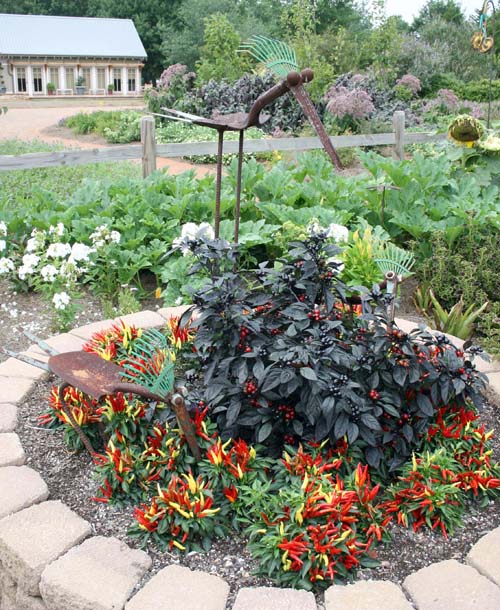Whether driving in our own neighborhood or going to visit friends or relatives, we all tend to compare our home landscape to others. There’s no denying that a well-landscaped house is very appealing to the eye and can make a home more inviting.
Many real estate experts say that 10 to 15 percent of a house’s perceived value comes from a simple, though attractive, well-thought-out landscape. A large percentage of homebuyers decide whether or not to look at a house or take it seriously based on its curb appeal.
Whether you are in the market to sell your home or simply want to spruce it up, you can make your home more appealing by spending some time now on the exterior details.
Curb appeal is basically others’ perception of your home as they approach it from the road or driveway. It is the first impression your property gives and it sets the tone for things to come.
To improve your house’s curb appeal, you must take on the role of a visitor or potential buyer. Step to the front of your house or cross the street and take a good look at your house from that vantage point. Take note of any weaknesses and strengths you see.
Then, ask yourself the following questions. What is your first impression of the house and the landscape? What are the best exterior features of the house or lot? How can you enhance them? What are the worst exterior features of the house or lot? How can you minimize or improve them?
Make a list of the problem areas you discover. University of Georgia Cooperative Extension experts recommend tackling the following cleanup and repair chores first, then investing some time into projects that will make the grounds more attractive.
• Kill mold and mildew on the house, sidewalks, roof or driveway.
• Stow away garden implements and tools.
• Clean windows and gutters.
• Pressure wash dirty siding and dingy decks.
• Edge sidewalks and remove vegetation growing between concrete and bricks.
• Mow and weed the lawn.
• Rake and dispose of leaves, even if your lot is wooded.
• Trim tree limbs that are near or touching the house’s roof.
After you tackle many of these chores, take a closer look at the landscape. Decide if you plan on living on this property for a significant period of time or will be trying to sell it at a later date.
Determining how long you plan to live on the property will help you establish an overarching idea for your house landscaping projects. If you are landscaping for yourself as a lifelong resident, you only need to consult your own tastes. But if your property is fated to be a real estate listing, you are essentially landscaping for other people’s tastes, namely the tastes of potential real estate buyers.
Keep in mind these simple landscape design tips from UGA Extension.
When selecting a landscape design, preserve as many mature, natural trees as possible. Large trees take decades to grow and can have a strong impact on the salability of a house.
Use larger, upright evergreen shrubs on the corners of the house to frame it. When massing with smaller shrubs, always plant odd numbers. Odd numbers seem to appear more appealing to the eye and create a better sense of unity. Avoid planting shrubs in long, straight lines.
Don’t go overboard with color. Sometimes keeping it simple looks better than adding multiple colors that can get lost in each other. Focus on using mass plantings of one color, such as white, blooming annuals in front of dark-colored evergreens.
Consider using plants that provide year-round curb appeal. This not only includes flowering plants, but includes trees and shrubs that display great fall color and trees that have interesting, exfoliating, colorful bark. Select plants of different textures and shapes to add contrast.
Pay particular attention to the arrangement of your plants. A symmetrical arrangement means that whatever you have on one side of the center of the home, you have on the other. Asymmetrical designs do not have the exact same design on both sides. Whichever you choose, repeat some plants or colors on both sides to create a unified landscape.
Large, broad, curving beds that are well-maintained add great curb appeal. To create new beds, lay them out using a garden hose or extension cord. Don’t make the beds too curvy, too tight or too wavy or they can look poorly laid out from a distance, may be difficult to maintain and a nightmare to mow around.
Remember, keep it clean and simple when it comes to curb appeal. Some of the best house landscapes have large, curving pine beds with hardwood trees and a turf area that stands out like a golf green. They often contain three to four types of plants around the home to frame it and to draw attention to an attractive, leaded, glass front door. A clean, newly painted house with a simple, but well-planned, landscape can add value and salability to any home.








